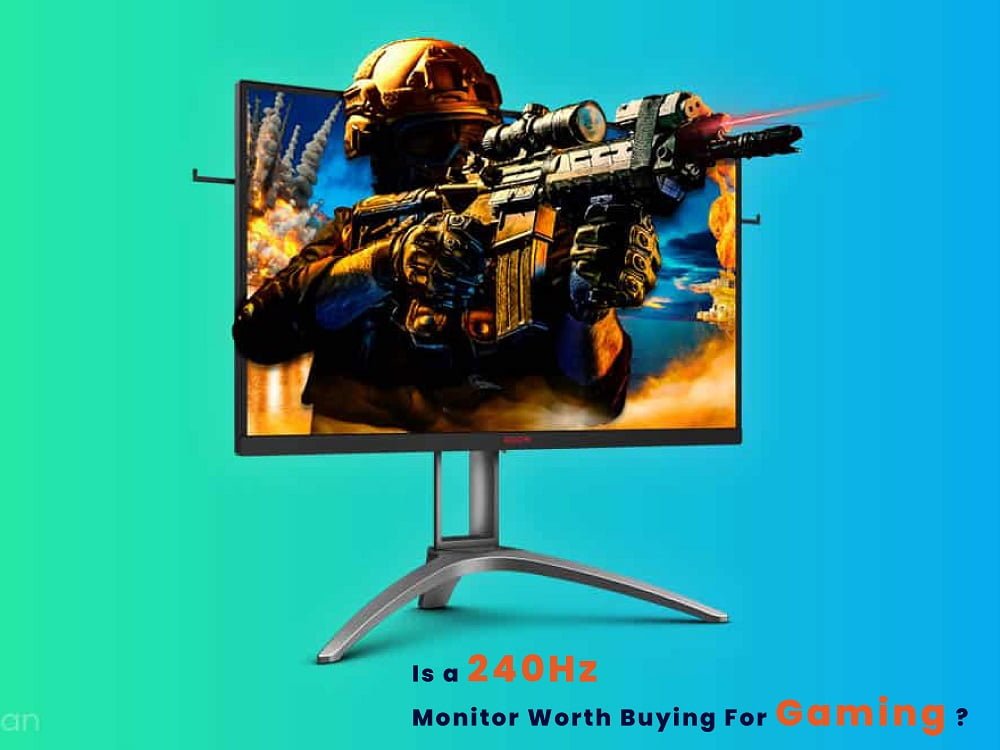Table of Contents
There are many factors to consider when purchasing a gaming monitor, but one of the most important is the refresh rate. A monitor with a high refresh rate will display images more quickly than a monitor with a lower refresh rate, which makes for a smoother gaming experience. So what is the difference between 240Hz and 120Hz monitors?
240Hz monitors are capable of displaying images at 240 frames per second, which is four times the speed of a 120Hz monitor. This means that if you’re playing a game on a 240Hz monitor, your character will move around the screen much more quickly than if you’re playing on a 120Hz monitor. However, there are also disadvantages to 240Hz monitors: they are typically more expensive, and they can produce more glare in brightly-lit environments. So whether or not you should buy a 240Hz monitor depends on your specific needs and preferences as a gamer.
What is a 240Hz Monitor and Why is it Important?
240Hz monitors are becoming more popular among gamers because they offer a better experience. A Hz monitor is a type of monitor that displays images 240 times per second. This means that the images on the monitor are updated 120 times per second, which is much faster than the regular 60Hz monitors.
240Hz monitors provide a smoother gaming experience because it eliminates the jittering and screen-tearing that can happen with 60Hz monitors. Jittering is when the image on the screen moves erratically and screen-tearing is when the image seems to tear apart.
Many people believe that a Hz monitor is worth buying for gaming because it provides a better overall experience. If you are in the market for a new monitor, be sure to check out some of the 240Hz models available on the market today.
What to Look for in a 240Hz Monitor
If you are a gamer, it is important to have a monitor that supports 240Hz. 240Hz monitors offer a smoother gaming experience because they can render images at twice the frame rate of a normal monitor.
There are many different types of monitors that support 240Hz, but some of the most popular monitors include the BenQ XL2411G and the Asus ROG Swift PG279Q.

You should also consider other factors when purchasing a 240Hz monitor, such as response time, color accuracy, and viewing angles. Make sure to read reviews before making your purchase decision.
The Downsides of a 240Hz Monitor
A high refresh rate monitor, or Hz monitor, is a great investment if you are a gamer. A Hz monitor delivers a smoother gaming experience by reducing the amount of frame-rate drops and lag.
However, there are some downsides to buying a Hz monitor. First of all, most games released in the last few years support 240Hz monitors. So unless you have an older game that doesn’t support it, it might not be worth upgrading to a Hz monitor.
Another downside is that Hz monitors are expensive. If you don’t need a high refresh rate and can live with a lower one (60Hz), then it might be cheaper to just buy a standard monitor instead.
The Benefits of a 240Hz Monitor for Gaming
A Hz monitor is a type of monitor that offers a higher refresh rate than your standard 60Hz monitor. 240Hz monitors provide a more fluid gaming experience by allowing the graphics to update 240 times per second, which is four times faster than your typical 60Hz monitor.
There are many reasons why you should consider upgrading to a Hz monitor for your gaming needs. Here are just a few of the benefits:
| Also Recommended Best desktop PC computer deals for October 2023 |
1. A Hz monitor provides a more fluid gaming experience.
2. A Hz monitor reduces motion blur and Ensures crisp text and images.
3. A Hz monitor reduces screen tearing and Provides a better overall image quality.
4. A Hz monitor provides an immersive gaming experience and Allows you to play games at higher resolutions without any lag or issues.
5. A Hz monitor minimizes input lag, which Provides an edge over other players in online games.
6. A Hz monitor improves accuracy when playing First Person Shooters (FPS).
7. A Hz monitor enhances visual effects in video games such as Minecraft, Witcher 3, and Overwatch.
8. A Hz monitor helps to improve overall eyestrain when playing video games for prolonged periods of time.
Conclusion
There is no question that a 240Hz monitor is the future of gaming and for good reason. Not only does this technology offer smoother gameplay experiences, but it also reduces input lag – the time it takes for your game to respond to your inputs. If you are in the market for a new monitor, or if you are just looking to upgrade your current one, make sure to consider a 240Hz model.










